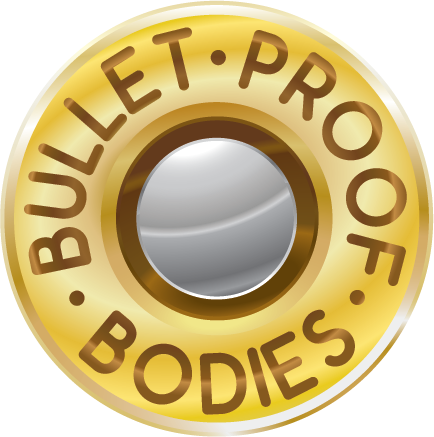The knee pain that won’t quit
Iliotibial band syndrome is a common overuse injury that causes severe knee pain, and can be difficult to cure.
Most non-runners have never heard of the iliotibial band: a stabilizing fascia on the outside of the leg that connects at the hip and below the kneecap. It’s purpose is to stabilize the leg when the quadriceps, the big muscles on the front of the thigh, fatigue.
The quadriceps are the muscles distance runners use the most: together with the hamstrings, they comprise the ‘primary movers.’ The cumulative effect of long slow mileage is a shortening and weakening of the quadriceps. When the quads weaken, the IT bands prevent excessive side-to-side leg motion that could damage the knees and hips.
The problem with diagnosing and treating IT band syndrome is that symptoms only appear after the injury becomes serious. Though tight, sore quadriceps are easy to feel, tightening of the IT bands can occur with no pain or noticeable loss of flexibility.
The runner’s first inkling of a problem is severe pain at the attachment points, that typically occurs several miles into a run. The pain, which the runner feels either at the side of the hip or lateral side of the kneecap, can go away for a period of time, only to reappear days, weeks or months later.
Compounding the problem is the fact that IT band syndrome has a variety of causes, ranging from overpronation or underpronation, leg length discrepancies, muscle imbalances, an excessive Q-angle, tight hip flexor, gluteal or quadricep muscles, or a combination thereof.
It all starts with the feet
Most specialists agree that IT band injuries begin with the feet. When a runner’s feet roll excessively inward or outward during the gait cycle, it places more stress on the IT bands, causing them to tighten.
Not all running shoes are created equal: good ones are the runner’s first line of defense against iliotibial band syndrome. Specialty running shops offer gait analysis, to assess how much support a given runner needs.
There are three categories of shoes, ranging from motion control models that correct for severe overpronation, to neutral cushioned shoes for runners who underpronate or have a neutral gait pattern. Many runners wear stability shoes, which provide a moderate amount of arch support.
Sometimes the feet act differently: one may overpronate, and the other not. Leg length discrepancies, pelvic rotation and muscle imbalances are among the culprits. Since shoes can’t correct for different gait patterns in the left and right foot, an orthotic device in the shoe evens out the feet, so they function the same way.
Building a strong core
Core strength is key to preventing IT band and other overuse injuries. When the quadriceps and hamstrings fatigue, the runner’s pelvic muscles take over to keep the legs tracking straight.
While there’s a lot of good information on core strength training online and in print, it’s helpful to start with a specialist. An experienced coach, personal trainer or physiotherapist can assess problem areas, and assign specific exercises to strengthen the weak links.
Home remedies
The proactive measures mentioned above slant the odds in one’s favor, but they aren’t bulletproof. Iliotibial band injuries can strike the most cautious of runners, often at the peak of their training, when they can least afford to take time off.
If an athlete catches the injury early, it’s possible to continue some training, and still allow it to heal. Here’s some pointers:
Run only on soft surfaces such as packed dirt or grass. Avoid severe up or downhill grades. If the surface is cambered, make sure to change sides of the road periodically. Sometimes one side of a cambered surface will be less irritating to the injury than the other.
Run to the point of pain, but not through it. Since IT band pain typically comes on several miles into the run, it’s possible to run to that point without making the injury worse. With treatment, the interval before the onset of pain will grow longer, and the runner can gradually resume normal training.
Ice massage is the best way to reduce the inflammation around the painful area. The easiest way to do ice massage is to fill Dixie cups with water and freeze them: peel the paper down gradually to expose a small area of ice and massage the sore spot for a minimum of five minutes. Do the ice massage two-to-three times daily until the pain subsides.
Some runners are flexible enough to stretch the IT band, others are not. A good sports massage specialist or physical therapist can promote healing by releasing tension in the IT bands. Some runners find that rolling on a foam roller is effective in reducing IT band tightness.
Professional treatment
If the pain doesn’t subside in a couple of weeks, it’s best to seek professional treatment. Office treatments not only reduce the painful symptoms of IT band syndrome: they also expedite healing. Modalities that reduce inflammation include ultrasound, cold laser, and electric therapy.
The Graston Technique promotes healing by breaking up scar tissue that builds up around the injured area, so the affected muscles, connective tissue and fascia can heal properly.
Therapists will recommend a specific strengthening and stretching routine to help the muscles resume normal function, and reduce the likelihood of a recurring injury.
More information on musculoskeletal conditions, injuries, and treatments can be found at http://www.robertsonfamilychiro.com
Article Source: https://EzineArticles.com/expert/Carson_Robertson/1639058
Article Source: http://EzineArticles.com/7857416
Video: https://www.youtube.com/user/abelsonb

